‘Happiness, sadness, grief and worry’ across Israel and Gaza following ceasefire deal agreement
People are celebrating in the streets as a ceasefire deal is reached, but they still have 72 hours to wait, writes Bel Trew from Tel Aviv
Your support helps us to tell the story
From reproductive rights to climate change to Big Tech, The Independent is on the ground when the story is developing. Whether it's investigating the financials of Elon Musk's pro-Trump PAC or producing our latest documentary, 'The A Word', which shines a light on the American women fighting for reproductive rights, we know how important it is to parse out the facts from the messaging.
At such a critical moment in US history, we need reporters on the ground. Your donation allows us to keep sending journalists to speak to both sides of the story.
The Independent is trusted by Americans across the entire political spectrum. And unlike many other quality news outlets, we choose not to lock Americans out of our reporting and analysis with paywalls. We believe quality journalism should be available to everyone, paid for by those who can afford it.
Your support makes all the difference.A digital clock that towers over “Hostages Square” in Tel Aviv has been ticking for the last 466 days. It marks the seconds, minutes and days since families in Israel and beyond have been campaigning for the release of hundreds of their loved ones taken by the Hamas militant group into Gaza.
It is a clock that these families hope will finally come to a stop.
On Wednesday, mediators from the US and Qatar announced that they had reached a ceasefire deal between Hamas and Israel, which will come into effect on Sunday. Negotiators hope it is the first step in ending the unprecedented bloodshed in Gaza, where Palestinians say Israel’s bombing has killed more than 46,000 people and laid waste to swathes of the Strip.
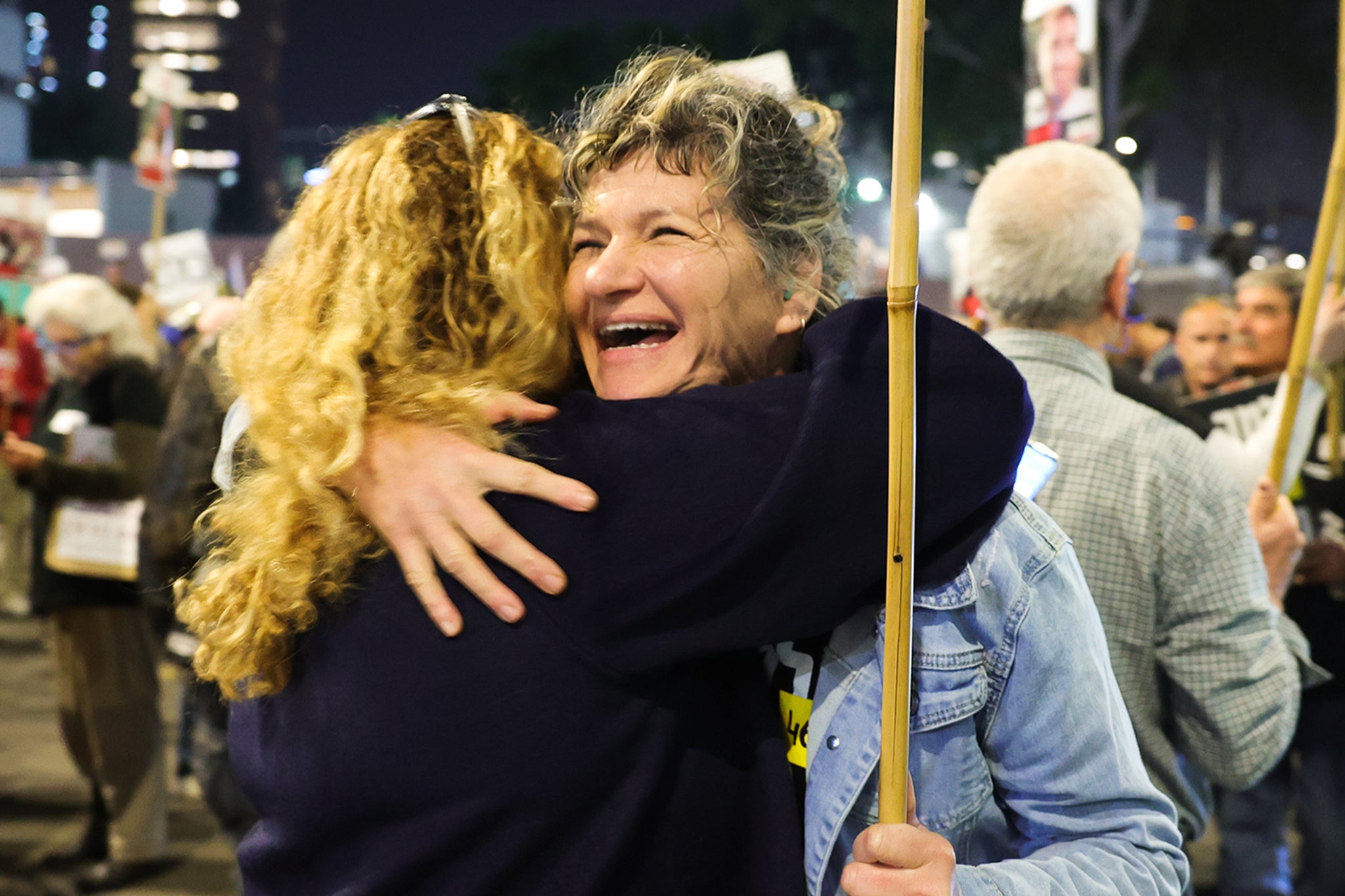
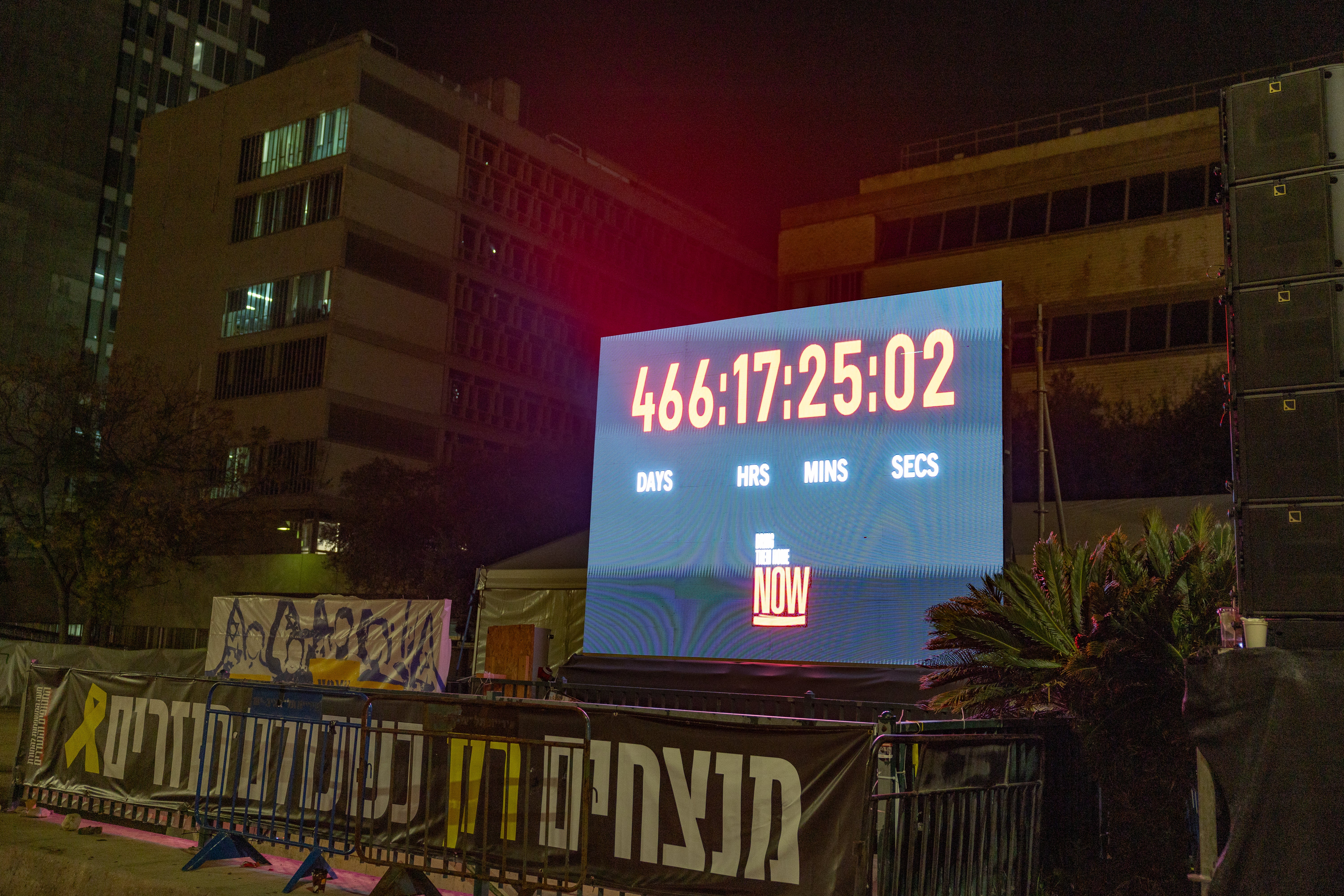
The hope is that it will also lead to the release of all the remaining 100 or so hostages held in Gaza and will lay the groundwork for the end of this nightmare that began on 7 October, when Hamas launched its bloody attack on southern Israel, killing more than 1,000 people according to Israeli estimates.
The wording of the deal, which The Independent has seen, is complicated. It was described by one person, who is briefed by the negotiators, as “an onion”.
That worries civilians in Gaza, living in tents, their homes completely destroyed and dozens of family members killed.
They told The Independent they were cautiously celebrating, worried at the same time that the deal wouldn’t hold.
“It’s a strange feeling,” says Nedal, from the north of Gaza, an area largely razed to the ground. “We are sad for those who were killed and injured, and at the same time happy that the bloodshed has stopped. We hope our return is a matter of days.
“People are celebrating in the streets, shouting happily and gathering together. But they are also worried, as it will start on Sunday. There are still 72 hours to wait.”
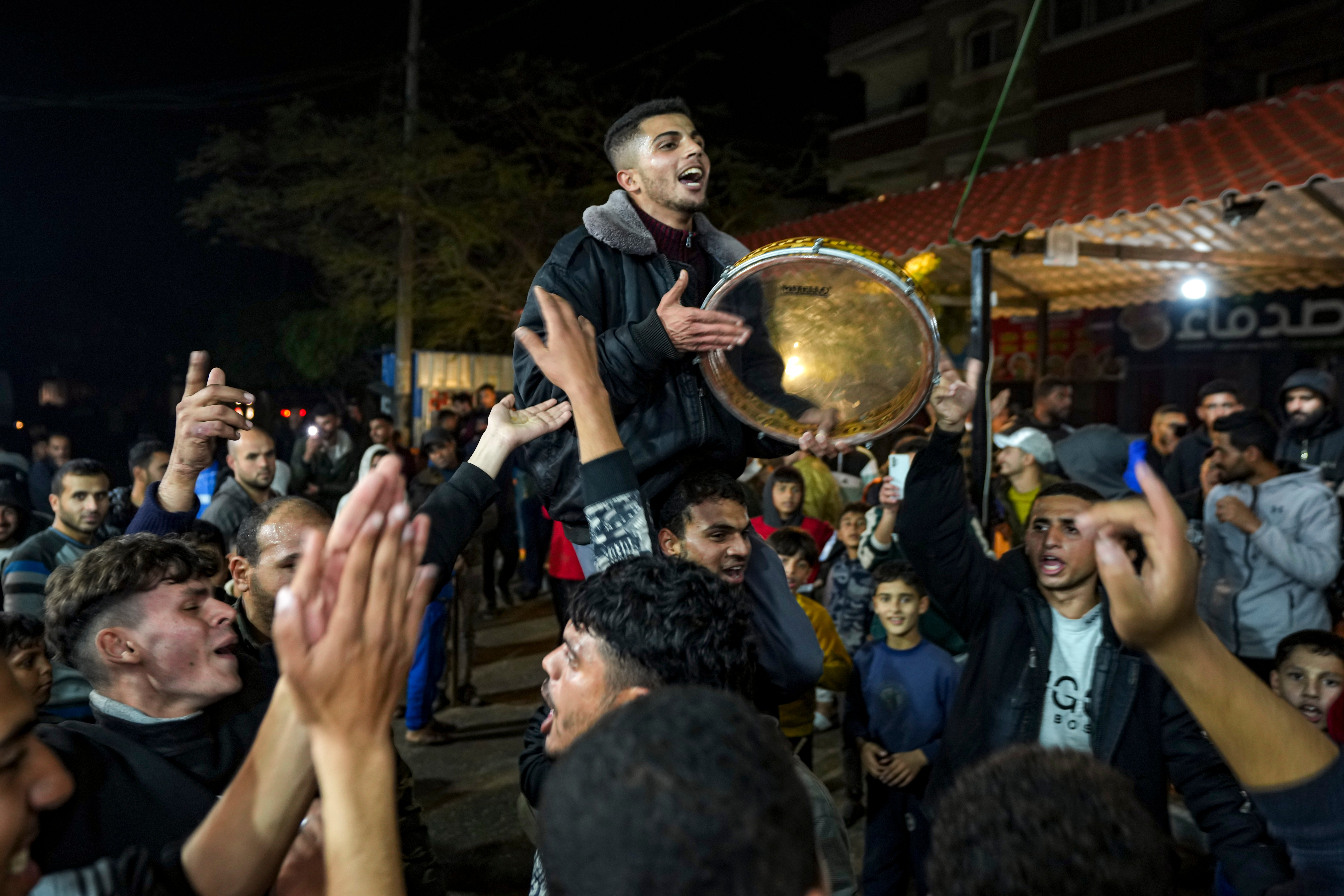
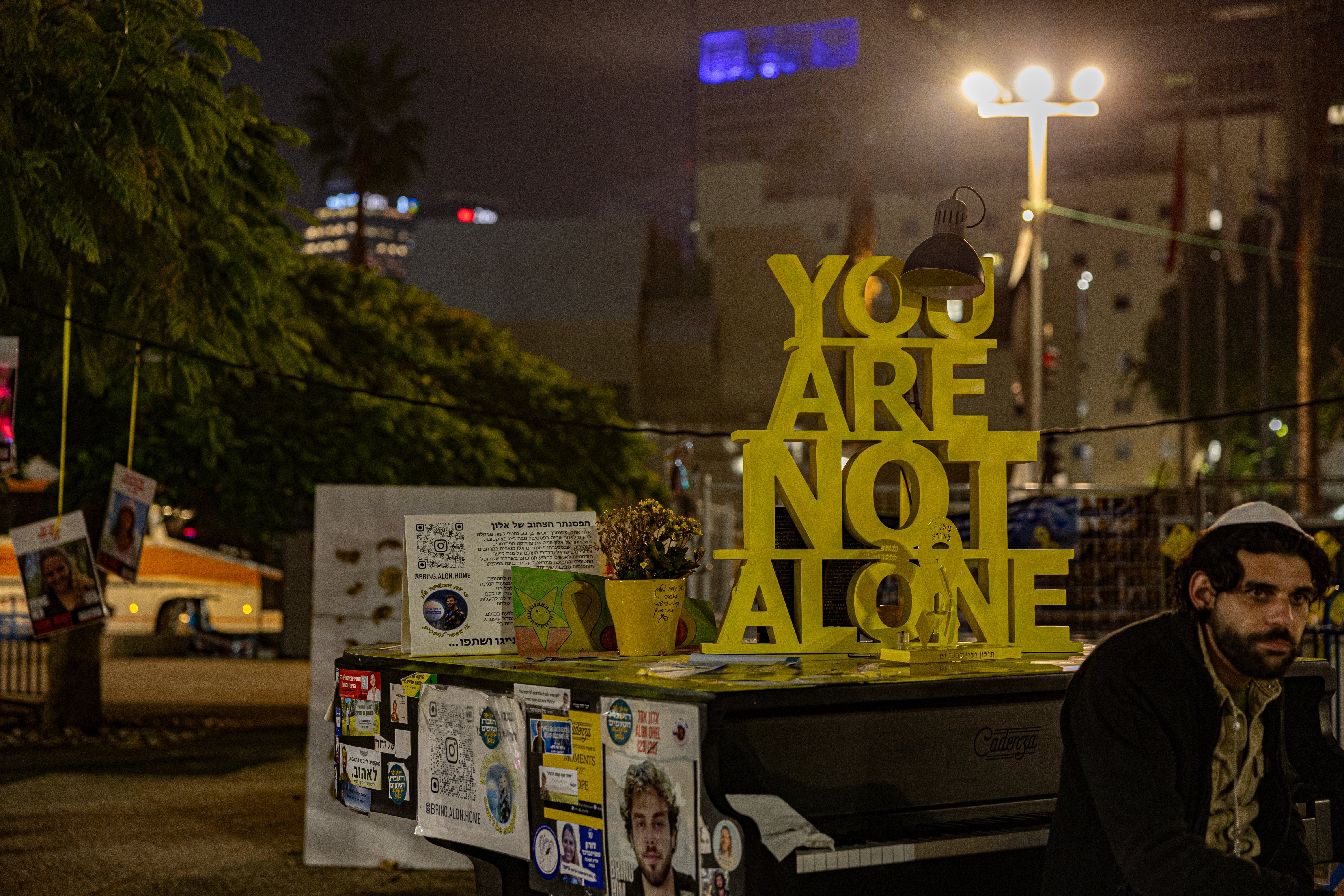
Care International said the agreement is “just the first step in stemming the overwhelming tide of suffering”, adding: “Palestinians have been killed on an incomprehensible scale.”
In Israel, families of the hostages also described a whirlwind of joy, hope, and “deep anxiety” that the agreement might collapse and not everyone would be brought home.
“It’s mixed feelings – happiness, sadness, grief, and worry,” said Gil Dickmann, whose cousin Carmel Gat, 41, a hostage, was supposed to be part of this ceasefire deal.
Carmel, an occupational therapist seized from her home in Kibbutz Be’eri, was on the list of those set to be freed in an earlier draft of this deal that floundered in the 11th hour in the autumn. Carmel was shot dead by her captors in a tunnel shortly after negotiations collapsed in September.
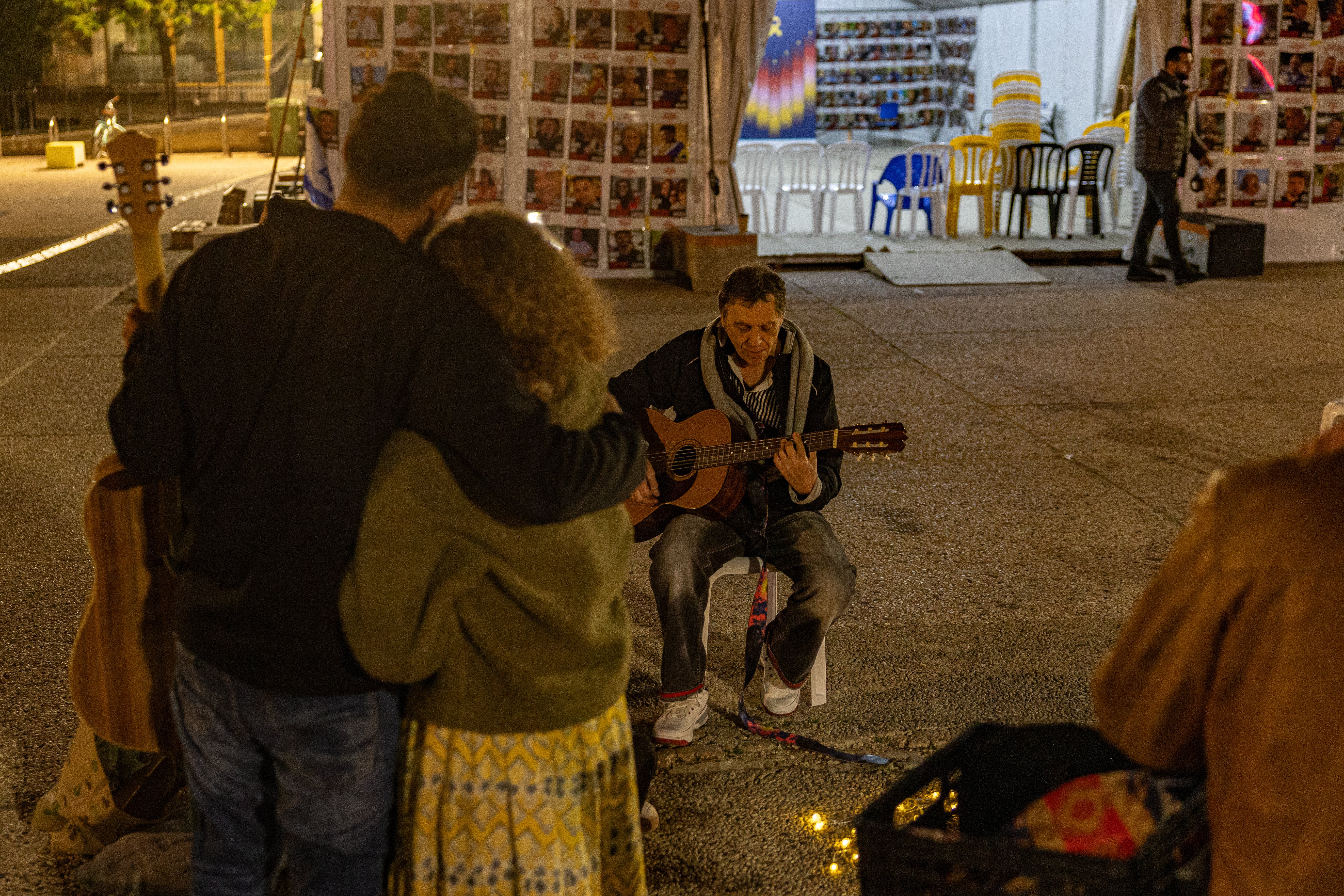
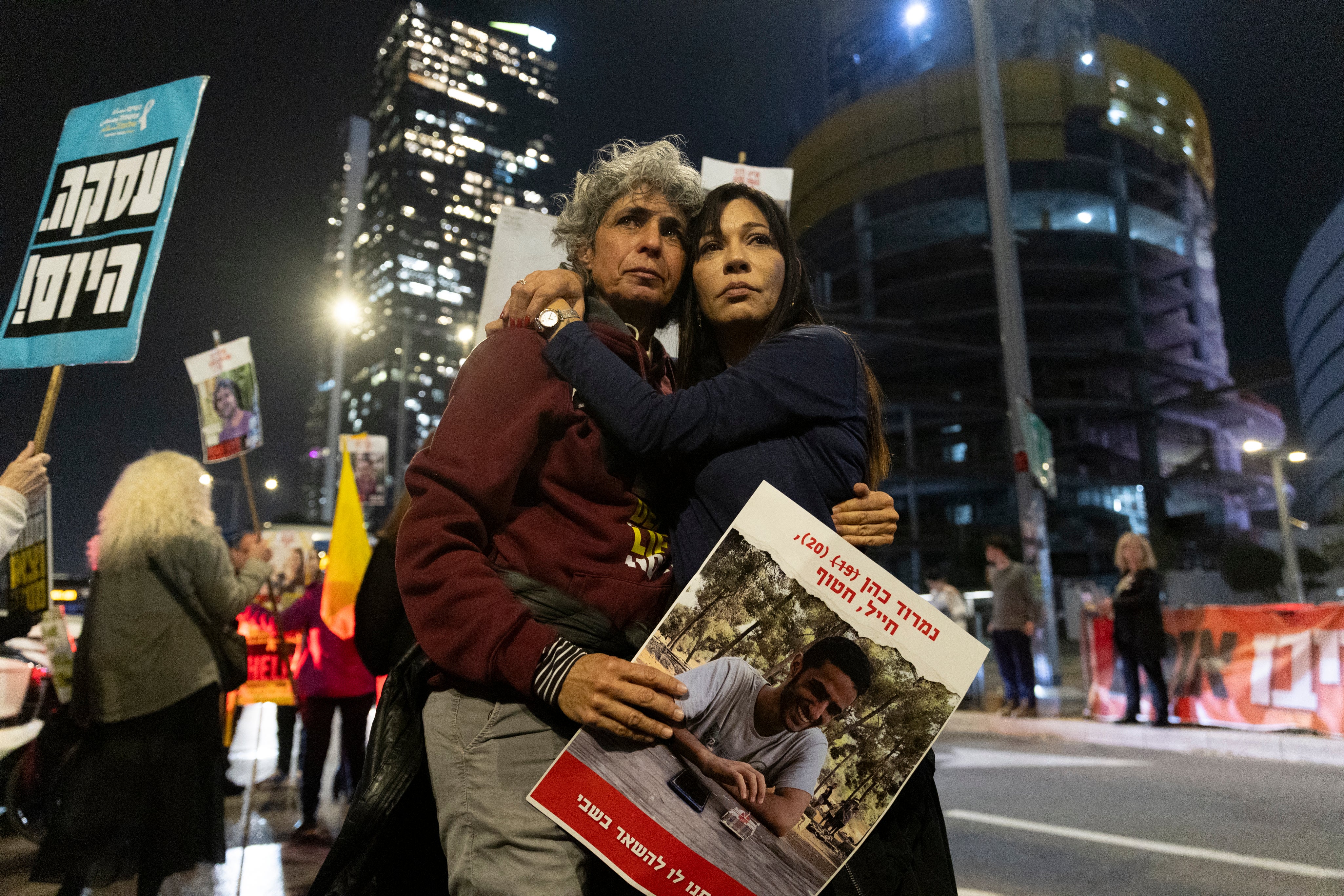
“She was even supposed to be part of the first days of the first phase, but the deal didn’t come in time. So this was such a miss for us, for me,” Gil added, his voice cracking.
“On the other hand, I’m really so happy for my fellow hostage family members who are going to see, hug, and kiss their loved ones after waiting for such a long time. It feels like some of my family members are coming home too.”
In the first phase, 33 hostages, including women, the elderly, and the wounded, are expected to be released in exchange for the release of hundreds of Palestinians held in Israeli prisons.
According to US president Joe Biden, it will see the withdrawal of Israeli forces from densely populated areas of Gaza and a surge in humanitarian aid to the Strip, which has teetered on the brink of complete famine.
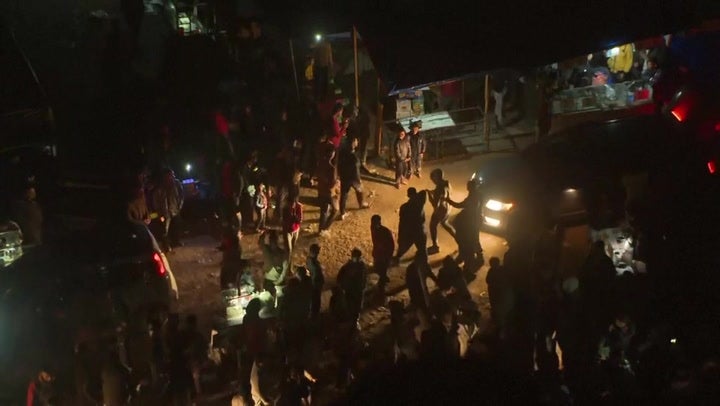
During that time, negotiations will start for the second and third phases, when the remaining living hostages, including male soldiers, will be released and Israel will completely withdraw from Gaza.
But many worry there are numerous steps that have to be taken before that can happen.
Israeli prime minister Benjamin Netanyahu said late on Wednesday that the ceasefire agreement with Hamas is still not complete and final details were being worked out.
“We are really, really worried. From what I understand, this was the same deal we had on the table since May. It wasn’t signed before – and the reason why it is signed now is because [Donald] Trump is now in the White House,” Gil continues, echoing what people close to the negotiations have told The Independent: the pressure for a truce before Trump’s inauguration on Monday was a watershed moment.
Thanking Trump’s team, Gil added he hoped the incoming US president understood that he had to finish what he had started.
“He should leave no one behind,” he said.
In Gaza, Nedal said despite the devastation and the loss, families were celebrating because there was a chance they could go home.
“People might be able to go back to the north. But of course, most homes were destroyed. But they are celebrating.”

Join our commenting forum
Join thought-provoking conversations, follow other Independent readers and see their replies
Comments